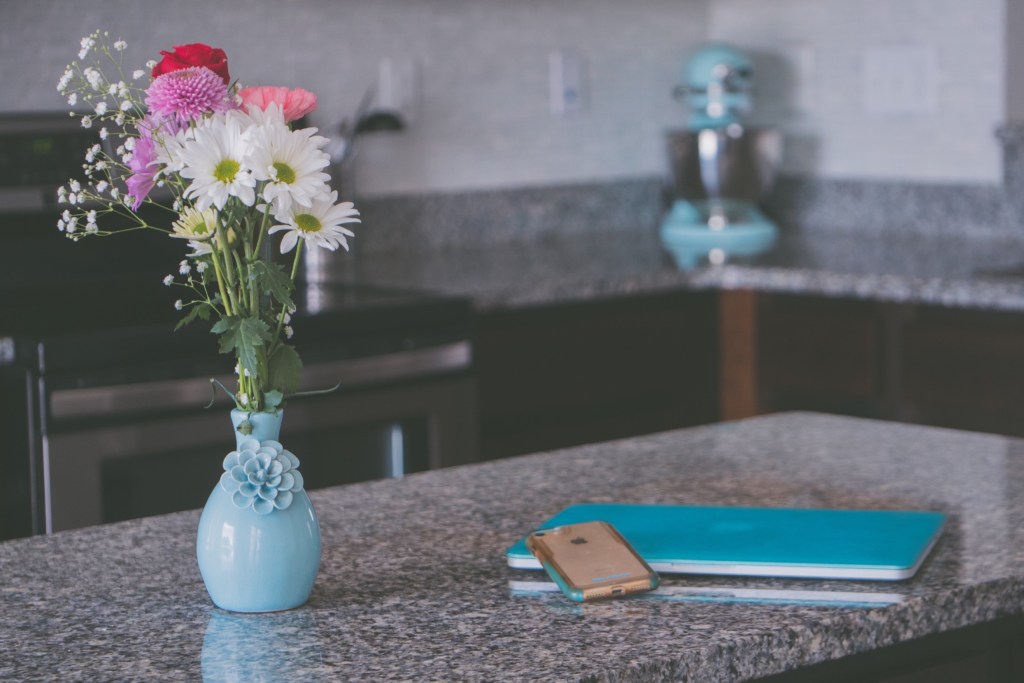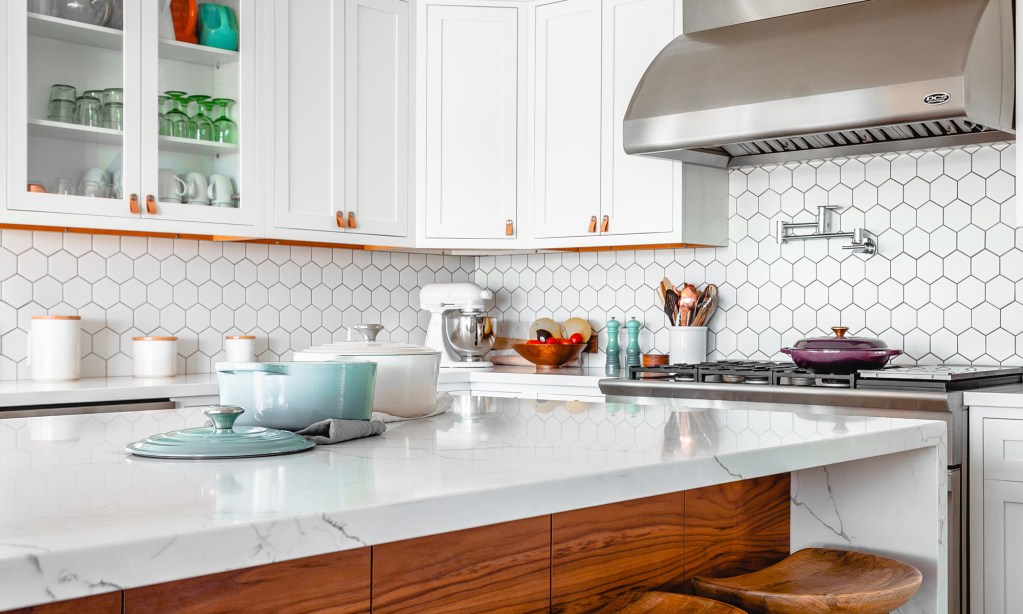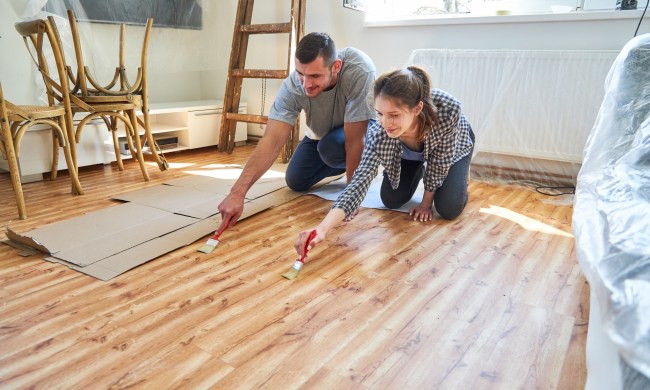If your kitchen or bathroom countertops are starting to show their age, you may be considering a home remodeling project to get these important pieces in your home back to their former glory. Maybe you’re just looking to refinish a drab-looking countertop, or there could be unsightly damages and stains that need to be repaired. You’re likely wondering whether you can undertake this project on your own or if you should hire a professional. Before you move forward, however, you’ll need to determine whether your countertop can be repaired or refinished, or if it’s time to replace it completely.

Should you refinish?
If you’re on the fence about whether you should refinish your countertop or replace it, know that there are pros and cons to each avenue. The direction you take for your countertop project depends on your budget, time constraints, and skill level when it comes to performing the update yourself.
Countertop refinishing costs less
If you’re working with a strict budget when it comes to your countertop project, you’ll be happy to know that simply refinishing your countertop will be a lot gentler on your pocketbook than replacing the entire countertop. Refinishing your countertop is about half the cost of replacing it, especially if you are particularly skilled at-home DIY projects and can do the work yourself.
Countertop refinishing takes less time
Replacing your countertop requires a lot of steps, from measuring and ordering, to even additional design costs if your kitchen is an odd shape. This process, along with installing the new countertop, can take up to a few months. Refinishing your countertop, on the other hand, takes under a week.
DIY countertop replacement requires significant skill
One downfall of replacing your countertop on your own is the level of skill required for both. If you’re new to DIY home projects, replacing your countertop is a big project and not one that you’ll want to undertake if you’re just starting out.

Repair options
So you’ve decided repairing a countertop is your best bet, but aren’t sure how to get started? We’ve put together the most popular types of repair techniques for each kitchen countertop so you can get started right away.
Laminate countertops
For laminate countertops that are just looking drab or faded, you can use a laminate restoring acrylic-based product. The actualPut down several coats using a lint-free cloth. Be sure to allow each coat to dry completely before applying the next one. If the laminate has damaged spots like nicks or scratches, you can fill these areas with a repair paste intended for laminate surfaces. Be sure the color of the paste matches your countertop. For laminate that is peeling, you can repair these areas on your own by applying contact cement between layers of your laminate restoring product.
If damages like cracks and peeling on your laminate countertop are spread over large areas, it’s best to replace the countertop instead of repairing such extensive damage.
Natural stone countertops
Natural stone surfaces like granite can easily become stained or damaged if the seal has worn down or is not applied properly. To determine if your granite countertop needs to be resealed, you can test it by dropping a few drops of water onto the surface. If the water absorbs into the granite material, it’s time to reseal. Luckily, you can purchase a natural stone sealer that you can apply in several coats.
Repairing small chips or scratches in your natural stone countertop is possible, but requires the use of an epoxy filler as well as a sander to be sure that the countertop is still level after the repair. Larger cracks or damages will likely require the use of a professional.
Tile countertops
While particularly popular in kitchens due to their resistance to heat and water, tile countertops are probably the most brittle type of countertops out there. They are generally made with a ceramic material, so they are prone to chips and cracks. However, tile countertops are actually the easiest to repair, even for the newest DIYers.
Since the countertop is made up of many smaller tiles, you can easily replace an individual tile that has chipped, cracked, or come loose. In some cases, particularly if you’re dealing with a small chip, you don’t even need to replace the tile. You can use a two-part epoxy to fill in the chip or crack and make it look good as new.
Your countertops are the centerpiece of your kitchen or bathroom. You want them to look as beautiful as possible. Countertops eventually get damaged, scratched, or even faded over time and with extended use, so refinishing, repairing, or even replacing them is inevitable. Depending on your countertop’s material and how extensive the damage is, undertaking this project on your own will require time and significant skill. If you’re not completely comfortable yet with your DIY skill level, it’s always better to consult a professional before having to abandon a remodeling project halfway through and waste your time and money.



